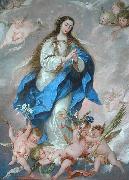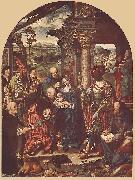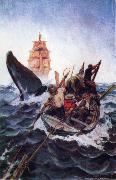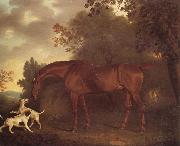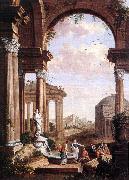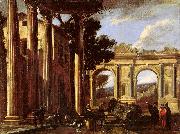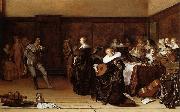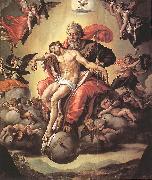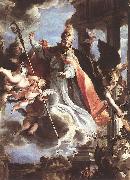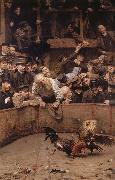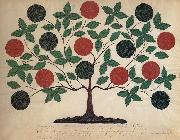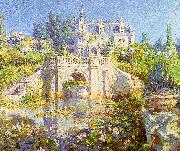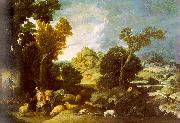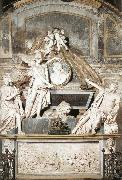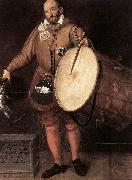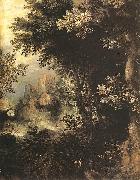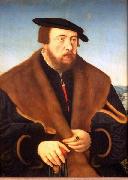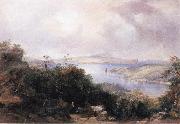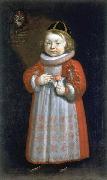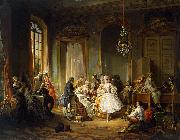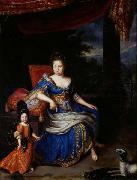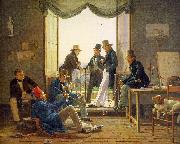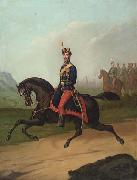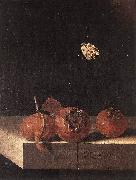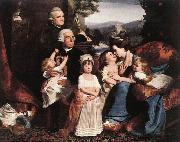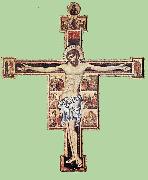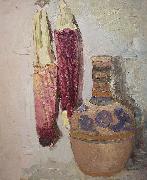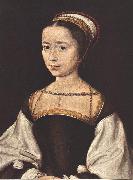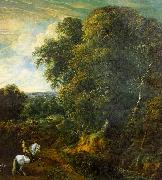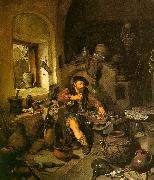|
|
|
|
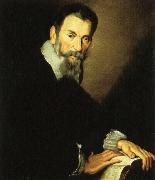 |
claudio monteverdi
|
|
Period: Baroque (1600-1749)
Country: Italy
Born: May 15, 1567 in Cremona, Italy
Died: November 29, 1643 in Venice, Italy
Genres: Ballet, Choral Music, Miscellaneous Music, Opera, Vocal Music
|
|
|
|
|
|
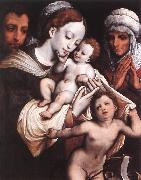 |
CLEVE, Cornelis van
|
|
Flemish painter, Antwerp school (b. 1520, Antwerpen, d.
after 1570, Antwerpen). |
|
|
|
|
|
|
|
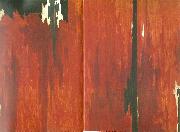 |
clyfford still
|
|
Clyfford Still (November 30, 1904 - June 23, 1980) was an American painter, and one of the leading figures of Abstract Expressionism.
Clyfford Still was a leader in the first generation of Abstract Expressionists who developed a new, powerful approach to painting in the years immediately following World War II. Still's contemporaries included Philip Guston, Franz Kline, Willem de Kooning, Robert Motherwell, Barnett Newman, Jackson Pollock, and Mark Rothko. Though the styles and approaches of these artists varied considerably, Abstract Expressionism is marked by abstract forms, expressive brushwork, and monumental scale, all of which were used to convey universal themes about creation, life, struggle, and death (the human condition), themes that took on a considerable relevance during and after World War II. Described by many as the most anti-traditional of the Abstract Expressionists, Still is credited with laying the groundwork for the movement. Still's shift from representational painting to abstraction occurred between 1938 and 1942, earlier than his colleagues, who continued to paint in figurative-surrealist styles well into the 1940s.
Still was born in 1904 in Grandin, North Dakota and spent his childhood in Spokane, Washington and Bow Island in southern Alberta, Canada. Although Abstract Expressionism is identified as a New York movement, Still's formative works were created during various teaching posts on the West Coast, first in Washington State at Washington State University (1935-41). His work of this period is marked by an expressive figurative style used in depictions of the people, buildings, tools and machinery characteristic of farm life. By the late 1930s, he began to simplify his forms as he moved from representational painting toward abstraction. In 1941 Still relocated to the San Francisco Bay area where, following work in various war industries, he became a highly influential professor at the California School of Fine Arts and what is now known as the San Francisco Art Institute. He taught there from 1946-1950 (with a break in the summer of 1948 when he returned to New York). It was during this time when Still broke through to his mature style. Still also taught at Virginia Commonwealth University from 1943-45. |
|
|
|
|
|
|
|
|
|
|
|
|
|
|
|
|
|
|
|
|
|
|
|
|
|
 |
Columbano Bordalo Pinheiro
|
|
(Lisbon, 21 November 1857 - Lisbon, 6 November 1929), who is usually referred to as Columbano, was a Portuguese Realist painter. Usually considered the greatest Portuguese painter of the 19th century, he has been compared to the likes of Wilhelm Leibl and Thomas Eakins.
Columbano was the son of a mediocre romantic painter, Manuel Maria Bordalo Pinheiro, and the younger brother of the great caricaturist, Rafael Bordalo Pinheiro. He became the leading painter of his generation and the master of realism in Portuguese painting, specializing in portraiture. He was disciple of his father, of the painter Miguel Ângelo Lupi and the sculptor Simões de Almeida. After attempting twice for a bursar to study abroad finally in 1881 the countess of Edla, second wife of D.Fernando would finance his study in France. There he studied the work of French naturalist, realist and impressionist painters, like Courbet, Manet and Degas without losing his distinctive style which is often gloomy and intimist. He joined the "Grupo do Leão" (The Lion's Group), a usual meeting of artists, writers and intellectuals in a Lisbon downtown restaurant called "Leão de Ouro" (The Golden Lion) in order to discuss aesthetic issues and proclaim Naturalism against the academic art of the time. The group also included Rafael Bordalo Pinheiro, Antenio da Silva Porto, Marques de Oliveira and Jose Malhoa. He painted portraits of some of the greatest names of Portuguese society and culture of his time like Jose Maria de Eça de Queiroz, Teefilo Braga, Raul Brandão and had great psychological accuracy in defining the personality of those depicted. His most famous portrait was that of the poet Antero de Quental in 1889. In this haunting work Columbano seems to have anticipated Antero's suicide.
Columbano was a well known Republican, so it wasn't surprising that after the Republic proclamation, in 1910, he was invited to design the flag of the new regime and was nominated director of the National Museum of Contemporary Art, currently the Chiado Museum, in Lisbon, of which he was in charge from 1914 to 1927. The best collection of his paintings is in the Chiado Museum, in Lisbon. He's also represented in some of the finest Portuguese museums, like the National Museum Soares dos Reis, in Porto.
|
|
|
|
|
|
|
|
|
|
|
|
|
|
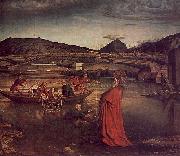 |
Conrad Witz
|
|
1400-1446 German
(Resident in Switzerland)
Conrad Witz Gallery |
|
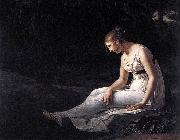 |
Constance Marie Charpentier
|
|
(born 1767 Paris, France - August 3, 1849 France) was a French painter. She specialized in sentimental genre scenes and portraits, mainly children and women. She was also known as Constance Marie Bondelu.
She studied under Jacques-Louis David and Francois Gerard. In 1788 she received a 'Prix d'Encouragement.' From 1795 to 1819 she exhibited at the Salon where she received a gold medal. |
|
 |
Constance Mayer
|
|
Marie-Françoise-Constance Mayer-Lamartiniere
French Neoclassical Painter, 1775-1821 |
|
 |
constant permeke
|
|
Constant Permeke (Dutch pronunciation: July 31, 1886 ?C January 4, 1952) was a Belgian painter and sculptor who is considered the leading figure of Flemish expressionism.
Permeke was born in Antwerp but when he was six years old the family moved to Ostend, where his father became curator of the Municipal Museum of Arts. Permeke went to school in Bruges from 1903 until 1906, when he was drafted into the Belgian army. He served in a university company with whom he settled in Sint-Martens-Latem. After his military service ended in March 1908, Permeke returned to Ostend where he roomed together with another artist, Gustave De Smet but in 1909 he returned to Latem where he lived as a recluse. His work of this period is characterized by his heavy brush. In 1912 Permeke married Maria Delaere and the newlyweds settled in Ostend. His work from this period gains its expressive force through muted tonality and brutal forms.
When World War I started, Permeke was mobilized and during the defense of Antwerp he was wounded in action near the town of Duffel. His wounds forced him to be evacuated to the United Kingdom where he was in hospital at South Hillwood. After his release from hospital he was reunited with his family in Folkestone, where his son John was born. In 1916 he moved to Chardstock in Devonshire and started painting again, mostly colorful English landscapes. After the end of the war, the Permeke family returned to Ostend in 1919. In contrast to the happy time in Devonshire, the harsh reality of the worker's life turns Permeke's work back to a gloomier mood as he mainly paints the harsh fisherman's life.
In 1921 Permeke was able to exhibit his work in Antwerp and in Paris. Between 1922 and 1924, Permeke regularly went to Astene, in order to cooperate with Frits Van den Berghe. In 1926 Permeke went to Vevey in Switzerland where he mainly painted mountain scenes. In 1929 he moved to Jabbeke. During this period he changed his subject: instead of the fisherman and the sea he now focused on the farmer and his land. During this period, Permeke was enormously productive with works like "Gouden Oogst" (1935), "De Grote Marine" (1935), "Moederschap" (1936), "Het Afscheid" (1948), "Dagelijks Brood" (1950). Starting in 1937 Permeke tried his hand at sculpting as well. As a sculptor, Permeke tried to isolate the human figure in monumental efforts. "De Zaaier" (1939), "Niobe" (1946) and "De Drie Gratiën" (1949) are good examples of this period.
During World War II, Permeke was forbidden to paint by the German occupiers as his art was seen by them as Entartete Kunst. Privately, things were even worse as his son Paul was arrested and sent to Germany as a forced labourer. After the war, Permeke was appointed director of the National higher Institute and of the Royal Academy in Antwerp but after only one year he offered his resignation. In 1947-1948, Permeke had a big retrospective exhibition in Paris but his happiness at the return of his son was soon shattered when in 1948 his wife died. Emotionally scarred and ailing, Permeke had to be nursed by his daughter.
|
|
 |
constant troyon
|
|
French Barbizon School Painter, 1810-1865
Troyon's students included Evariste-Vital Luminais |
|
|
|
|
|
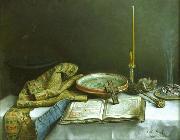 |
Constantin Daniel Stahi
|
|
(November 14, 1844 - June 18, 1920) was a Romanian painter and gravure artist.
In 1862 he entered the National School of Fine Arts from Iaşi where he was taught by Gheorghe Panaiteanu Bardasare and Gheorghe Şiller. He continued his artistic education in Munich where, for seven years, he studied painting, metal gravure and xylography.
He painted still life paintings representing small objects that were surrounding him, such as old books, newspapers, religious items, chairs, shoes, plates and especially fruits. Also, he painted many portraits of famous people of his time (for example Gheorghe Asachi, painted in 1881). Many others of his paintings take inspiration from the simple life in the countryside in idyllic compositions and by painting peasants having as models people living in Bavaria and Moldova regions.
Beside his artistic career, he was a professor and, later on, the headmaster of the National School of Fine Arts in Iaşi between 1892 and 1902, following Gheorghe Panaiteanu Bardasare.
He died in his house on Bărboi street in Iaşi on June 18, 1920 and was interred at Eternitatea Cemetery.
|
|
|
|
|
|
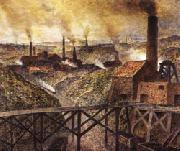 |
Constantin Meunier
|
|
(12 April 1831 - 4 April 1905), Belgian painter and sculptor, was born in Etterbeek, Brussels.
His first exhibit was a plaster sketch, "The Garland," shown at the Brussels Salon in 1851. Soon afterwards, on the advice of the painter Charles de Groux, he abandoned the chisel for the brush. His first important painting, "The Salle St Roch" (1857), was followed by a series of paintings including "A Trappist Funeral" (1860), "Trappists Ploughing" (1863), in collaboration with Alfred Verwee, "Divine Service at the Monastery of La Trappe" (1871) and episodes of the German Peasants' War (1878). About 1880 he was commissioned to illustrate those parts of Camille Lemonnier's description of Belgium in Le Tour du monde which referred to miners and factory-workers, and produced "In the Factory," "Smithery at Cockerill's," "Melting Steel at the Factory at Seraing" (1882), "Returning from the Pit," and "The Broken Crucible" (1884).
In 1882 he was employed by the government to copy Pedro de Campaña's "Descent from the Cross" at Seville, and in Spain he painted such characteristic pictures as "The Cafe Concert," "Procession on Good Friday," and "The Tobacco Factory at Seville" (Brussels Gallery). On his return to Belgium he was appointed professor at the Louvain Academy of Fine Arts.
In 1885 he returned to statuary and produced " The Puddler," "The Hammerer" (1886), "Firedamp" (1889, Brussels Gallery), "Ecce Homo" (1891), "The Old Mine-Horse" (1891), "The Mower" (1892), "The Glebe" (1892), the monument to Father Damien at Louvain (1893), "Puddler at the Furnace" (1893), the scheme of decoration for the Botanical Garden of Brussels in collaboration with the sculptor Charles van der Stappen (1893), "The Horse at the Pond," in the square in the north-east quarter of Brussels, and two unfinished works, the "Monument to Labour" and the Zola monument, in collaboration with the French sculptor Alexandre Charpentier.
The "Monument to Labour," which was acquired by the State for the Brussels Gallery, comprises four stone bas-reliefs, "Industry," "The Mine," "Harvest," and the "Harbour"; four bronze statues, "The Sower" "The Smith" "The Miner," and the "Ancestor"; and a bronze group, "Maternity".
Meunier died at Brussels on 4 April 1905. Constantin Meunier was a freemason, and a member of the lodge Les Amis Philanthropes of the Grand Orient of Belgium in Brussels. He was one of the cofounders of the Societe Libre des Beaux-Arts of Brussels.
In 1939, a museum dedicated to him was opened in the last house in which Meunier lived and worked, in Ixelles. Today about 150 of his works are displayed there.
|
|
|
|
|
|
|
|
|
|
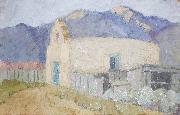 |
Cordelia Creigh Wilson
|
|
(28 November 1873, Georgetown, Colorado - 7 June 1953, Seattle, Washington) was a painter noted for her landscapes of New Mexico and the American Southwest.
Cordelia "Cordie" Creigh was born in Clear Creek County, Colorado. Her father died in her early childhood, and she was raised by her mother, Emma Creigh who shuttled the family between Winfield, Kansas and Colorado. She married Willard Wilkinson in Boulder, Colorado in 1897 and gave birth to her only child, Louise, in Hayden the next year, however, the couple divorced shortly after the turn of the century.
Cordelia then began to seriously develop her skills as an artist motivated by latest trends in American realism led by Robert Henri. Her academic training emphasized development of an alla prima technique and painting out of doors, which inspired her to produce bold impasto works quickly. She started making road trips to New Mexico and became friends with painters in the Taos Society of Artists and the Santa Fe art colony. Her numerous expressive oil sketches and en plein air canvases of adobe dwellings and rugged landscapes caught the attention of art dealers.
Before the end of the First World War, Cordelia married John H. Wilson and took his surname for her entire professional career. They settled on Tremont Street in Denver, just around the corner from the J. Gibson Smith Gallery which displayed and sold her works. Many of her paintings had frames she hand-carved in rustic Arts and Crafts style and gilded with sheets of gold leaf.
In 1917, Cordelia Wilson was honored by having two paintings selected for the inaugural exhibition of the new New Mexico Museum of Art in Santa Fe. The show featured easel works by George Bellows, Robert Henri, F. Martin Hennings, and Leon Kroll, who were working in the Southwest at that time, along with the "Taos Six" (Oscar Berninghaus, Ernest Blumenschein, Irving Couse, Herbert Dunton, Bert Geer Phillips, and Joseph Henry Sharp) and other members of the Taos Society. One of her paintings exhibited in the show, A Mexican Home, was reproduced in the January CFebruary 1918 issue of the journal Art and Archaeology (published by the Archaeological Institute of America) that featured a cover article about the museum's opening.
Among Cordelia Wilson's largest landscapes is a 50" x 70" canvas, created for World War I military training. It was exhibited at the School of American Research of Santa Fe in 1917 with other large-scale so-called "Range Finder" paintings by Blumenschein, Berninghaus, Phillips, Gustave Baumann, Walter Ufer, Leon Gaspard, and others. They had been commissioned by the U.S. Army based on a proposal by the Salmagundi Club of New York, whose members wanted to make a special contribution to America's war effort. When the show closed, the works on display were shipped to Camp Funston at Fort Riley, Kansas and Camp Cody at Deming, New Mexico. The paintings were used for indoor instruction in range finding, topographical quizzes, and map drawing at Army camps.
John Wilson, her husband, contracted tuberculosis in about 1921. The couple moved to the Seattle for his treatment at a sanitorium, where he passed away the following year. In 1923, Cordelia married for a third time to John N. Fahnestock, but this marriage ended in divorce in 1928. Cordelia continued to reside in Pacific Northwest producing still lifes, florals, and scenes of the Puget Sound region, although she periodically traveled, worked, and displayed her art in the Southwest. |
|
|
|
|
|
|
|
|
|
|
|
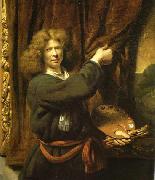 |
Cornelis Bisschop
|
|
In ca. 1650 he was a student of Ferdinand Bol in Amsterdam. In 1653 he was back in Dordrecht, where he got married. According to Houbraken he was the first to paint carved trompe l'oeil wooden panels in such an ingenious way that they became quite popular. He painted historical allegories, portraits, still lifes, and genre-works. He was asked to paint for the Danish court, but he died unexpectedly, leaving his wife and eleven children. Of these children, two sons (Abraham (1660-1700) & Jacobus Bisschop (1658-1698)) and three daughters became painters. These had been his students when he died, and Margaretha van Godewijk studied with his daughters. She wrote an emblem about his self-portrait with a curtain, which illustrates the legend of Zeuxis.
His son Jacobus later became a student of Augustinus Terwesten in the Confrerie Pictura
|
|
|







